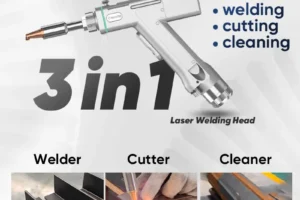Ironworker machines are essential tools in metal fabrication, combining multiple functions such as punching, shearing, and notching into a single device. Developed in the early 20th century, these machines have revolutionized the efficiency and versatility of metalworking processes.Ironworker machines are widely used in industries like construction, manufacturing, and metal fabrication. They streamline tasks such as cutting, bending, and shaping metal, making them indispensable in creating structural steel components, sheet metal products, and various metal assemblies.
Table of contents
I.Types of Ironworker Machine Tooling
II. Selecting the Right Tooling for Your Needs
III.Maximizing Versatility with Multi-functional Tooling
IV.Productivity Enhancements Through Proper Tooling
V.Maintenance and Longevity of Ironworker Tooling
VI.Innovations and Advances in Ironworker Tooling
VII.Cost Considerations and ROI
I.Types of Ironworker Machine Tooling
Overview of Tooling Options
- Ironworker machines are equipped with a variety of tooling options to perform different functions:
- Punching Tools: Create holes in metal sheets or plates.
- Shearing Tools: Cut metal to specific lengths or shapes.
- Notching Tools: Remove sections of metal to create joints or fit pieces together.
- Bending Tools: Shape metal into angles or curves.
Functionality and Application
Each type of tooling serves a unique purpose. Punching tools are ideal for creating precise holes, shearing tools for cutting metal with clean edges, notching tools for making corner cuts or intricate designs, and bending tools for forming metal into required angles.
II. Selecting the Right Tooling for Your Needs
Factors to Consider
Choosing the right tooling depends on several factors:
- Material Type and Thickness: Different tools are designed for specific materials and thicknesses.
- Project Requirements: The nature of the project, including the desired precision and volume of work, influences tooling selection.
- Tool Compatibility: Ensuring the tooling fits and operates correctly with the specific ironworker machine.
Common Mistakes
Avoiding common mistakes in tooling selection is crucial. Misjudging material properties, neglecting compatibility, and overlooking maintenance needs can lead to inefficient operations and increased wear on the machine.
III.Maximizing Versatility with Multi-functional Tooling
Benefits of Multi-functional Tooling
Multi-functional tooling enhances the versatility of ironworker machines by allowing them to perform multiple tasks with a single setup. This reduces the need for frequent tool changes and saves time.
Examples and Advantages
Examples include combination punching and shearing tools, which can switch functions quickly. The advantages are clear: reduced downtime, increased efficiency, and lower costs due to fewer tool purchases and maintenance requirements.
IV.Productivity Enhancements Through Proper Tooling
Impact of Tooling on Productivity
Using the right tooling can significantly boost productivity by improving accuracy, reducing rework, and speeding up production cycles. Proper tooling ensures that each task is performed optimally.
Automated and Quick-change Systems
Automated and quick-change tooling systems further enhance productivity by minimizing manual intervention and reducing the time required for tool changes, allowing for continuous operation and increased output.
V.Maintenance and Longevity of Ironworker Tooling
Essential Maintenance Practices
Regular maintenance is vital to extend the life of ironworker tooling. This includes cleaning tools after each use, lubricating moving parts, and storing tools properly.
Inspection and Replacement Schedules
Implement a schedule for regular inspections to identify wear and tear early. Replace tools as needed to avoid compromising the quality of work or damaging the machine.
Signs of Wear and Tear
Watch for signs such as dull edges, cracks, or chips. These indicate that the tooling needs attention or replacement to maintain optimal performance.
VI.Innovations and Advances in Ironworker Tooling
Latest Innovations
Recent advancements in ironworker tooling include the development of high-strength materials, improved coating technologies, and precision engineering that enhance tool durability and performance.
Impact on Versatility and Productivity
These innovations expand the capabilities of ironworker machines, allowing for more complex tasks and higher efficiency. Advanced tooling reduces the need for multiple machines, saving space and costs.
VII.Cost Considerations and ROI
Cost Range for Tooling
Tooling costs vary widely based on type, material, and complexity. Basic tools might be relatively inexpensive, while specialized or high-precision tools can be more costly.
Calculating ROI
To calculate the return on investment (ROI) for new tooling, consider factors such as increased productivity, reduced downtime, lower maintenance costs, and the extended lifespan of both the tooling and the machine.
VIII.Conclusion
This guide provides a basic understanding of Ironworker Machine. To learn more about Ironworker Machine, click here. KRRASS will be at your service.





